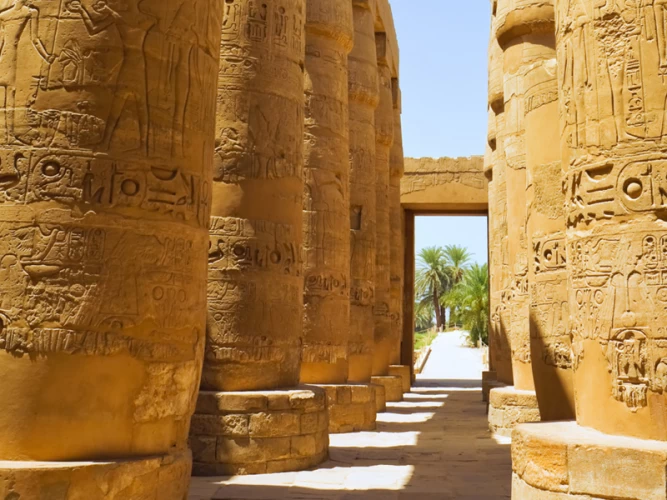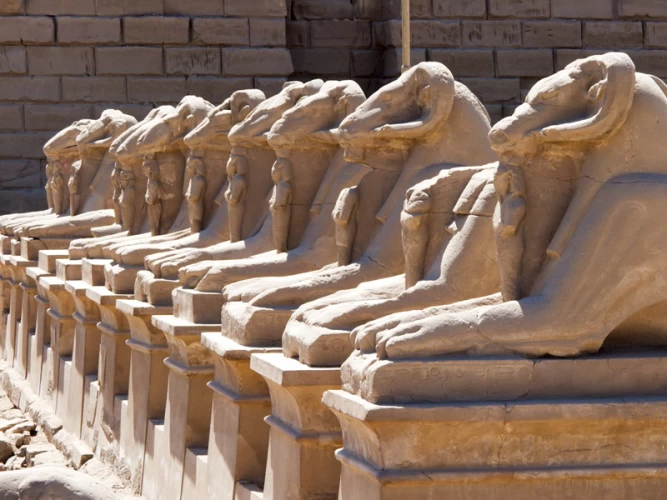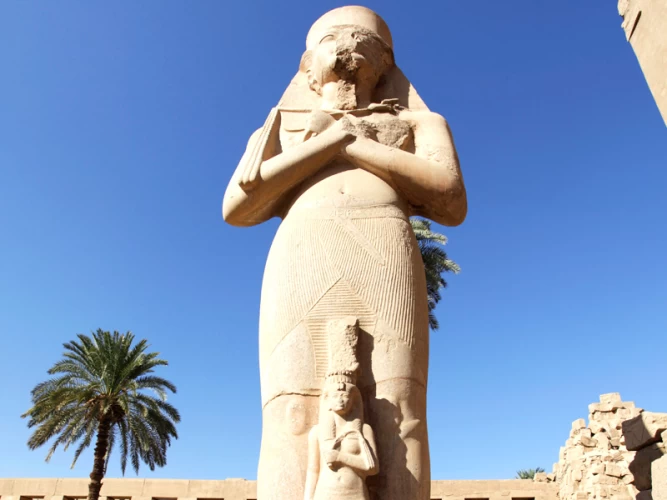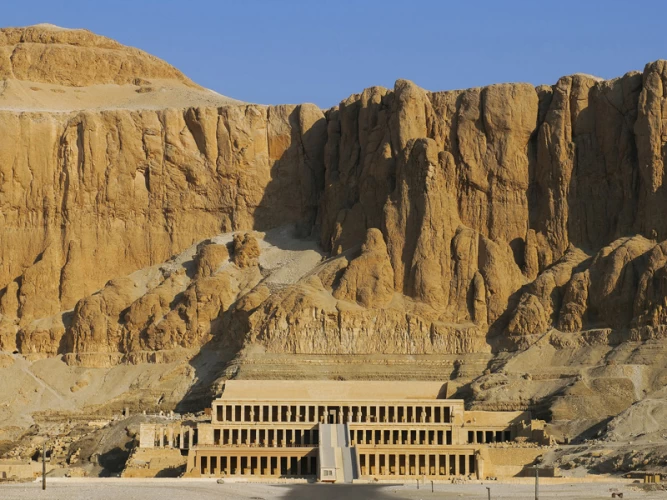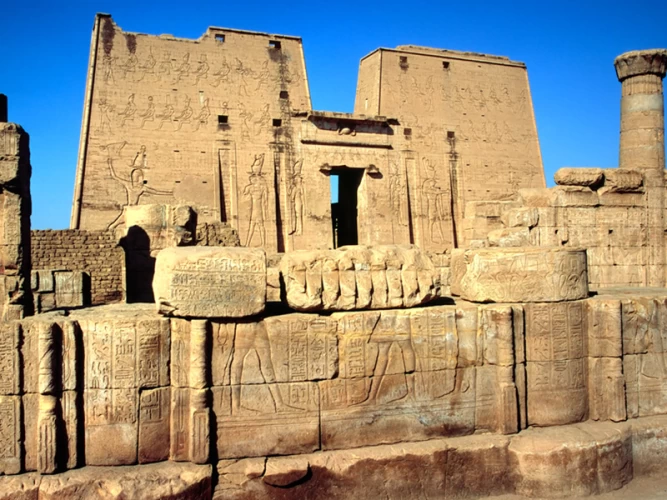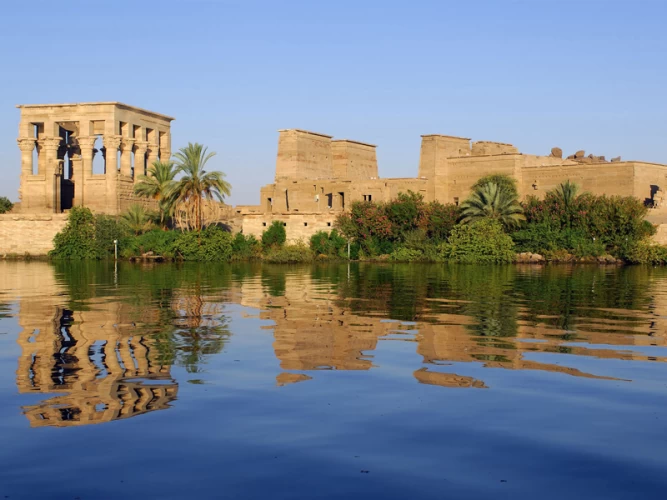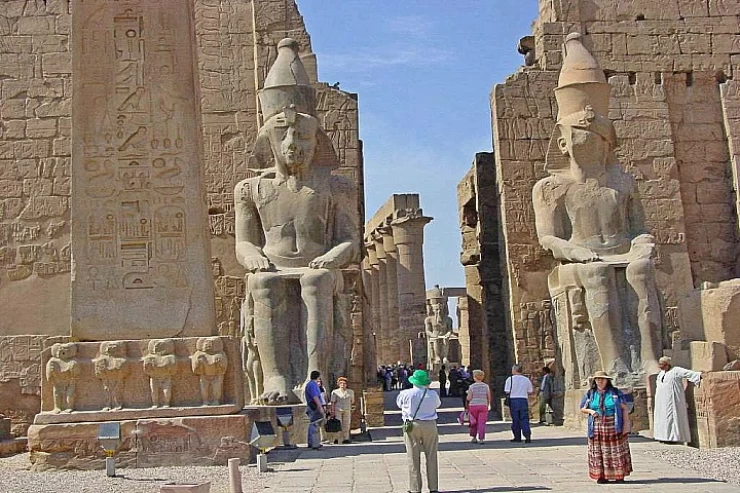You will start the day with Edfu after you have had your breakfast.
Edfu Temple
What we see now was constructed in the Graeco-Roman Period (332 BC–395 AD), although the oldest royal name found in the structure is Ptolemy VI Philometor’s (180–145 BC). Ptolemy XII Neos Dionysos (80–51 BC) did most of the work on the temple’s decoration.
The temple looks very different from other churches. Its design includes two centres, reflecting the religious significance of the place for two gods, ending in two main sanctuaries. On the right, Sobek’s axis shows up, whereas Harwer’s is on the left.
Here, Sobek was the god of fertility connected to water and the inundation, and he was worshipped together with his wife Hathor, the goddess of love and motherhood, and their son Khonsu, who was the god of the moon. Harwer, the adult form of Horus, defeats and overcomes his father’s murderer, Seth, a feat not possible until he had grown up. The Egyptian god was worshipped with his two family members, the “Ta senet nefret” and the “Pa neb tawy.”
karnak temple
The word Ipet-isu (“most select of places”) is how the ancient Egyptians referred to the temple of Karnak. This is a city where temples more than 2,000 years old were built and dedicated to the Theban triad of Amun, Mut, and Khonsu. Even though the place is neglected and abandoned, it still manages to outshine many modern wonders, and in the past, it sure looked amazing.
For people who weren’t taught to read in ancient Egypt, it was the home of the gods. It is the biggest religious structure ever built, spanning over approximately 200 acres (1.5 km by 0.8 km), and many people came to visit it for nearly two thousand years. There are sixty-one acres in the sacred area of Amun, and this is enough space for around ten average European cathedrals. The temple that lies at the centre of Karnak is so huge it might contain both Notre Dame and St. Peter’s Cathedral, along with Milan’s cathedral.
luxor temple
The Temple of Luxor is a huge Ancient Egyptian temple found on the east bank of the Nile in the current Luxor (ancient Thebes), some 1400 years before our era.



